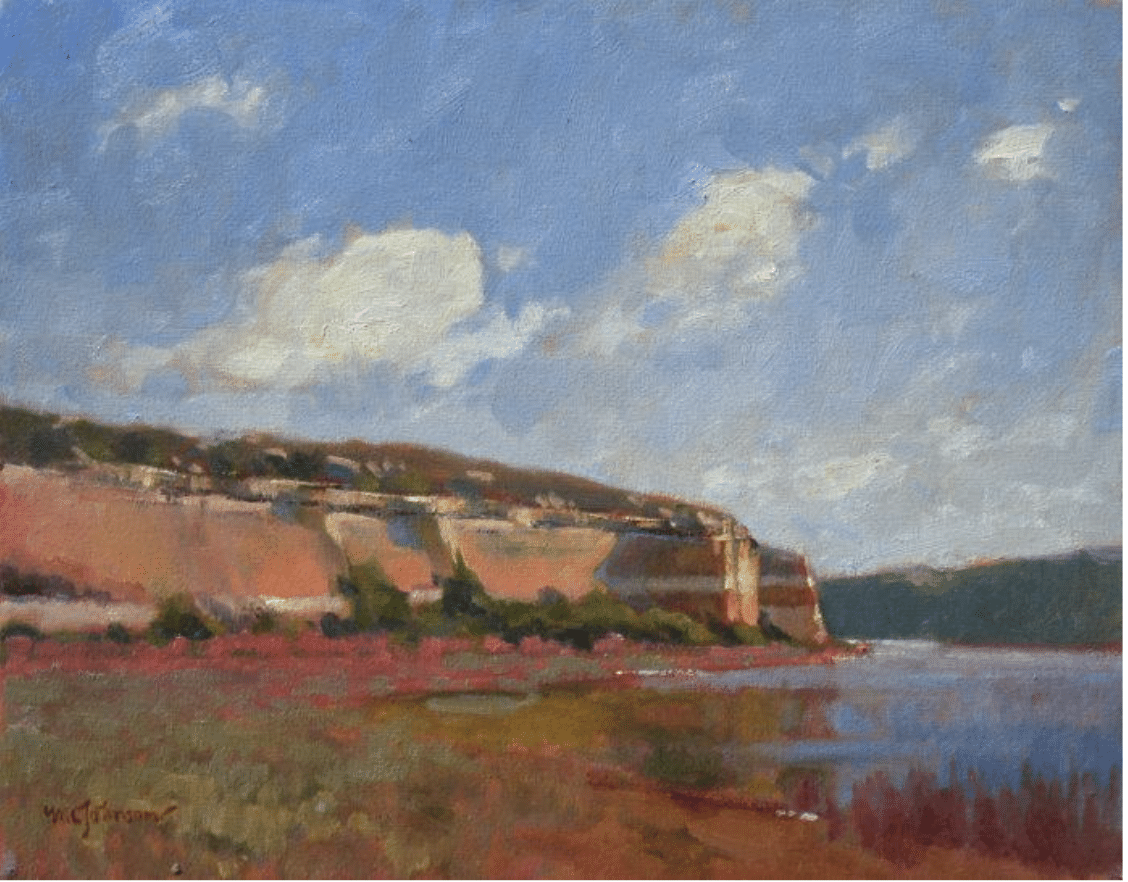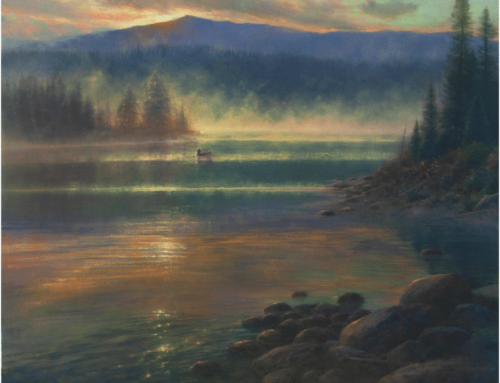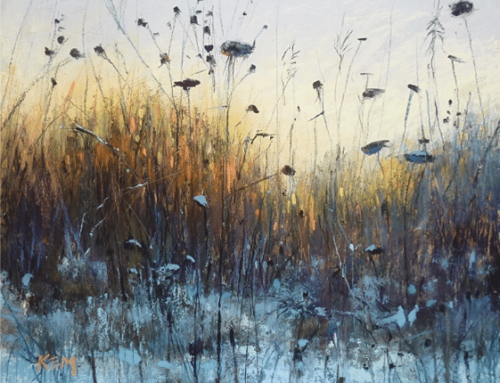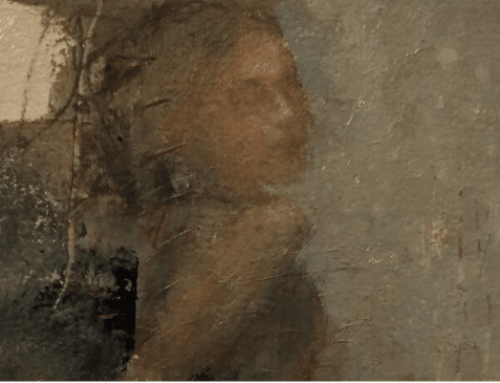In this excerpt from “Beautiful Landscape Painting Outdoors: Mastering Plein Air,” Michael Chesley Johnson explains how to finish a painting, and three tricks to help you decide if it’s complete.
Refining and Finishing a Landscape Painting
by Michael Chesley Johnson
You’ve spent time working out ideas with value sketches. After finally settling on one, you copied the design over to your painting surface. You blocked in shapes, not worrying too much about getting colors exactly right. Next, after comparing your painting to the scene, you created a mental priority list of what needed adjusting. Because time was passing, you started with the most urgent first. Now you can step back and congratulate yourself. But what else needs to be done?
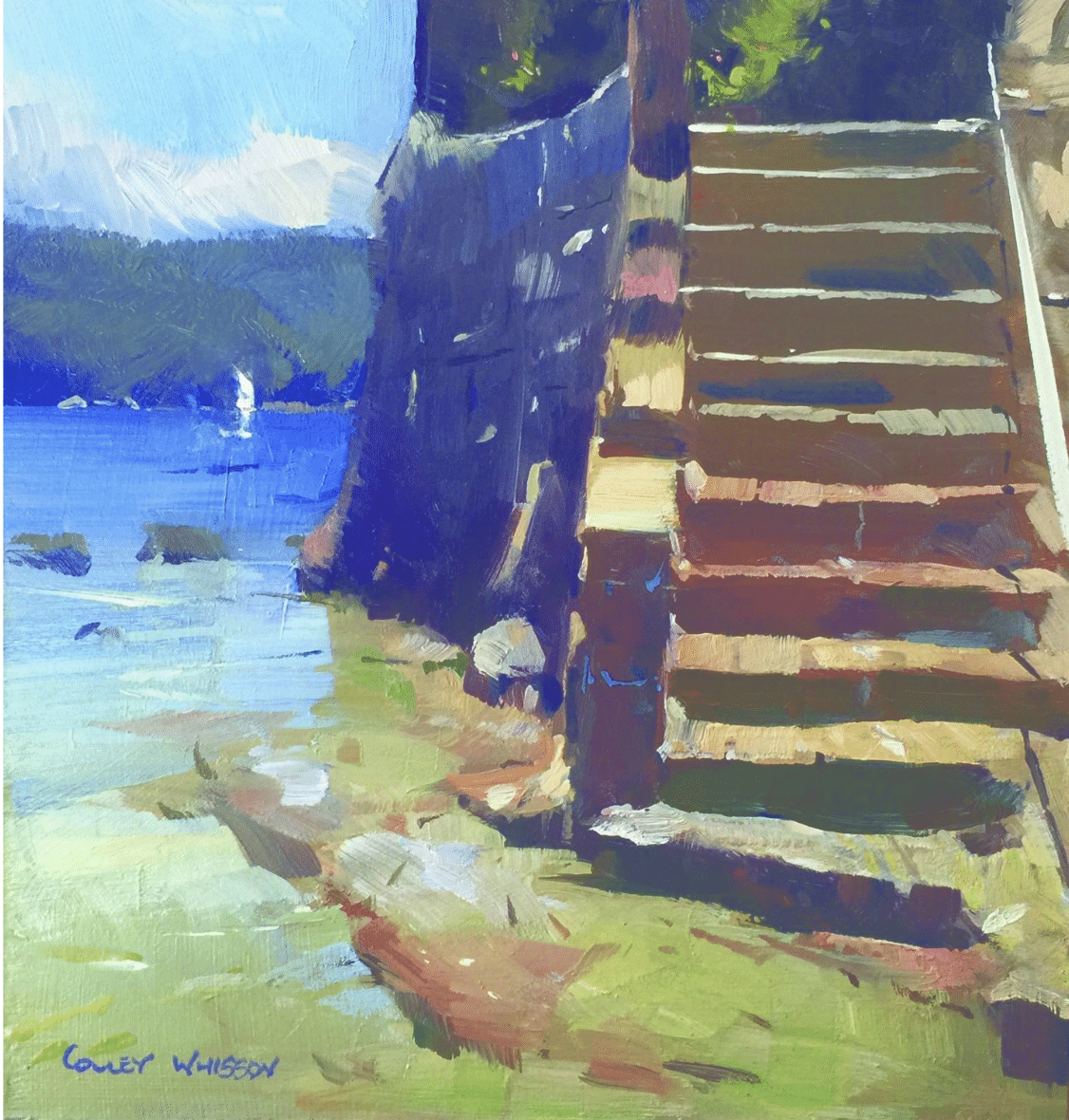
Colley Whisson, “Sunlit Steps,” 2017, oil, 8 x 8 in., Plein air
To some eyes, this painting might look unfinished because of the looseness of the brushwork. But Colley successfully captured the feeling of strong sunlight, and if that was the goal, the painting is complete.
Knowing When You’re Done With a Painting
What to do next and when to stop are frequently asked questions in workshops. In some ways, knowing when you’re done is intuitive—you just have a feeling. But it’s a feeling that’s gained with experience. Beginners rarely have it. They go too far, or they stop too short. Even so, knowing a few basic questions to ask will help determine if you need to do more, or if you need to stop.
Before you pack up and leave, ask yourself if you reached your goal. If your goal was to make a color sketch as a reference for a studio painting, then design and drawing aren’t that important. If your goal was to make a painting to sign, frame, and show, you need to ask yourself a few more questions, such as these:
- Design
Does your design create a center of interest in a way that is balanced but not boring? - Color
Do your color choices create the mood you had intended? - Dominance
Do you use the principle of dominance so it supports that mood? - Distance
Does your painting have depth? - Edges
Do you use edges in a way that leads the eye through the painting? - Mark Making
Do you use marks that support your idea and your mood? - Unity of Effect
Do all parts of the painting seem to create a whole, or does any part look out of place?
Make sure you take care of elements such as design, color, and dominance in the early stages of your painting. Don’t move ahead unless you’re satisfied with your design. Likewise, if you’re not satisfied with your color choices, stop before going further. And since dominance is an important principle in creating design and making color choices, stop if you see a problem there, too. It’s better to plan out design, color, and dominance early in the game.
These things can be adjusted later, of course, but you will find it hard and probably frustrating because you will have to undo so much. If I made mistakes in the early stages, I will take the painting home and, if I feel excited enough about its beginning, I’ll create a new painting based on the old, keeping in mind the problems that need correcting.
Distance, edges, mark making, unity of effect, and other factors are all part of the finish. You can either handle these in the field, or you can wait until you get to the studio where you have more time to address them. We haven’t talked about these yet, so now’s a good time to do so.
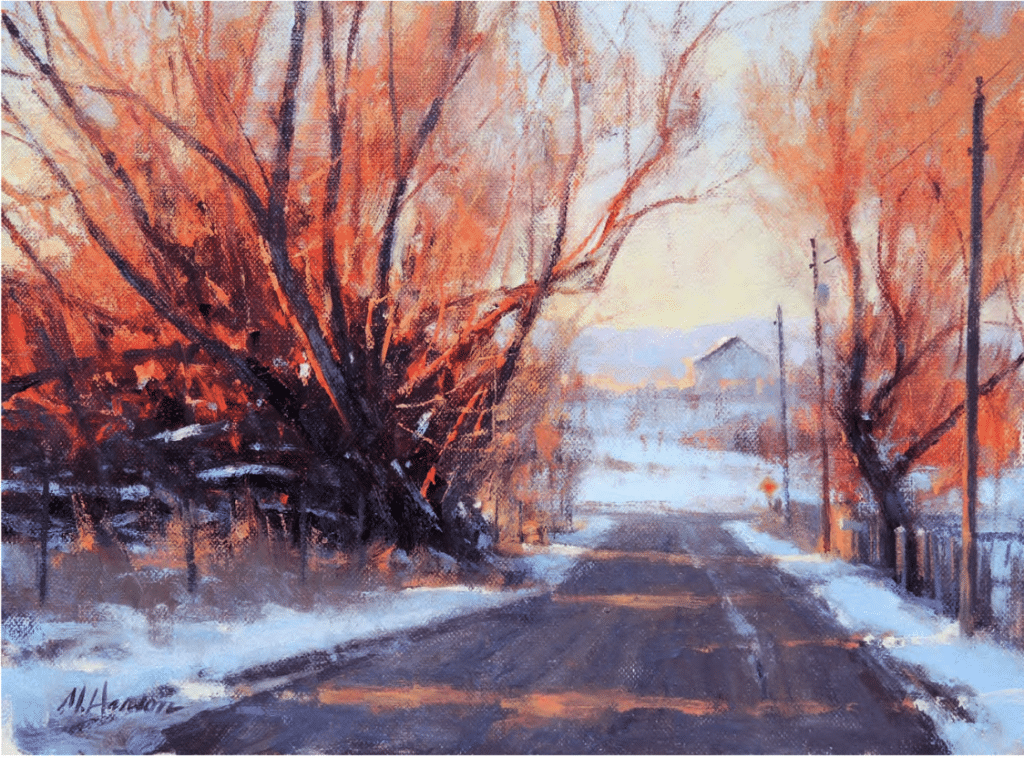
Marc Hanson, Morning Drive, acrylic on panel, 9 x 12 in., Plein air
3 Tricks to Determine How Close You Are to the End
- Take a photo of your painting, and then use the camera’s settings to view it in grayscale or print out a grayscale version. How are the values working? Is one value dominant? Do the shapes create an interesting pattern? You can also view the image on a computer or tablet. The smaller the image, the better. Ideally, if the design works at postage-stamp size, it will work in your painting.
- Putting the painting in a frame can do wonders to help determine degree of finish. It isolates the painting, letting you see it as a complete whole, unimpaired by visual distractions outside the frame. When I’m participating in a plein air event that requires a high degree of finish, I take a frame into the field and use it to check my progress.
- Turn the painting upside down. Instructors often talk about this approach as a way of checking for design issues. Turning a painting upside down lets you see it with fresh eyes; objects in the painting become unrecognizable shapes. I like to use this method to determine how well I’m handling depth or distance. Problems just jump out.
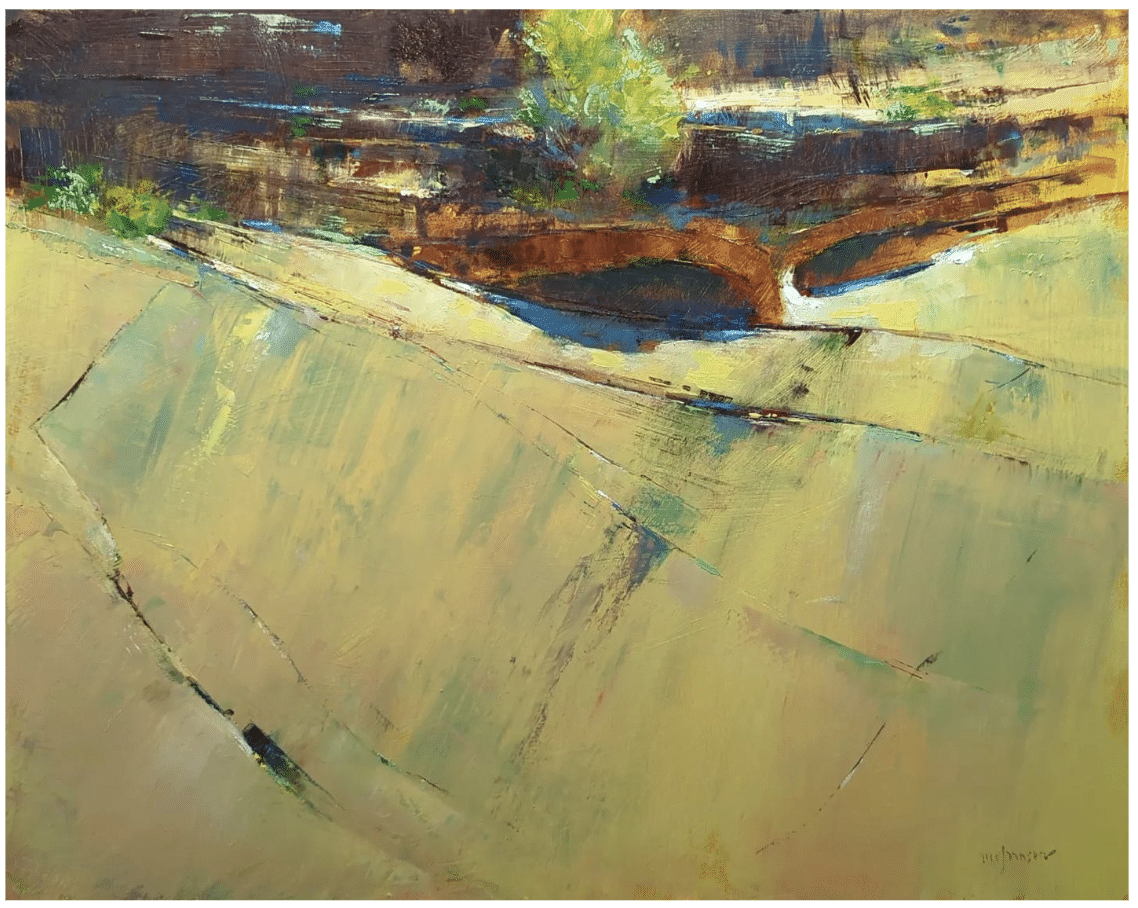
Michael Chesley Johnson, Crevice 16×20 Oil/Panel
Ready to up your plein air game? You’re just in time to join the PleinAir Live! virtual art conference, starting tomorrow, March 6 and ending March 8, 2024 – join us!
The Last Five Minutes of a Painting
By Kelly Kane
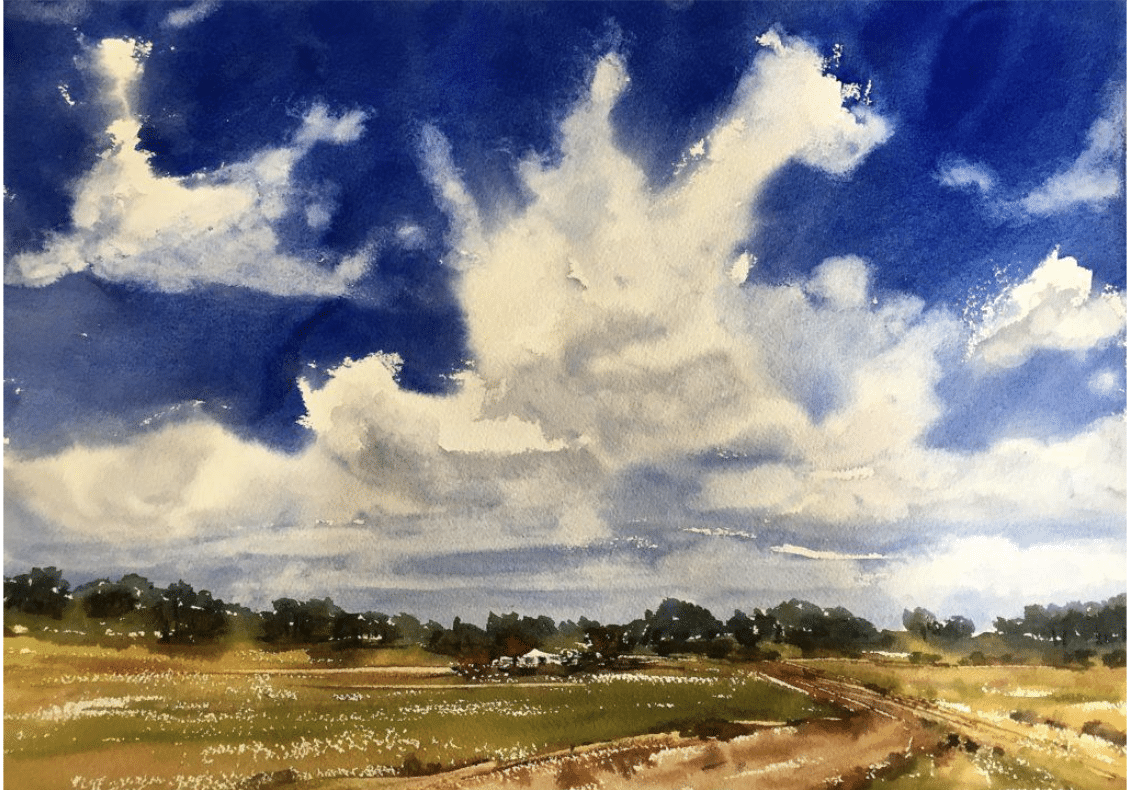
Georgia Mansur, Dancing Clouds, watercolor, 17 x 23 in.
A great many watercolorists work from light to dark, with each successive layer of paint further darkening key areas. Georgia Mansur does this, too, but with twists.
Hear it from her: “I normally do my paintings in three washes,” says Mansur. “The first wash is about saving the whites and getting light-tone values in. The second adds form and structure, with some of the darker values and midtones put down. The third wash is the time for details and working with the consistency of paint. That’ s where I will exploit texture, employ some impasto.
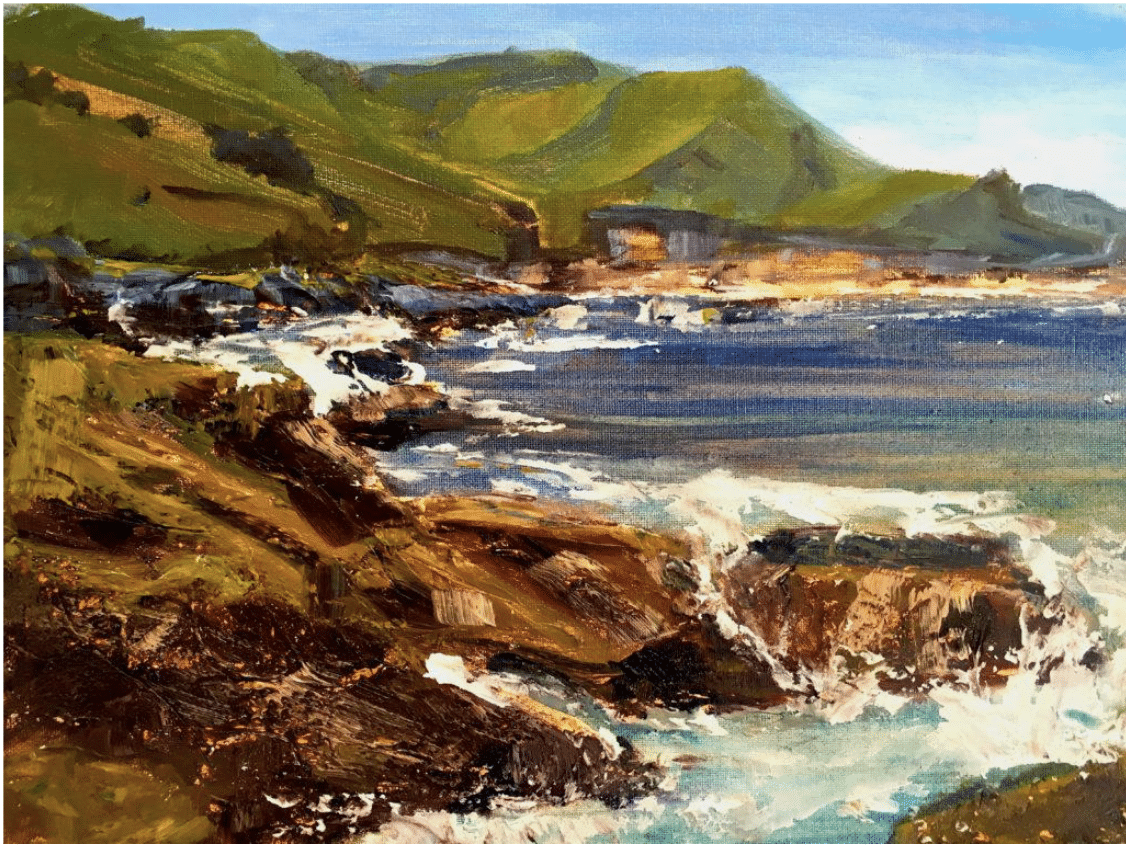
Georgia Mansur, Roussillion Hill Town, watercolor, 14 x 20 in.
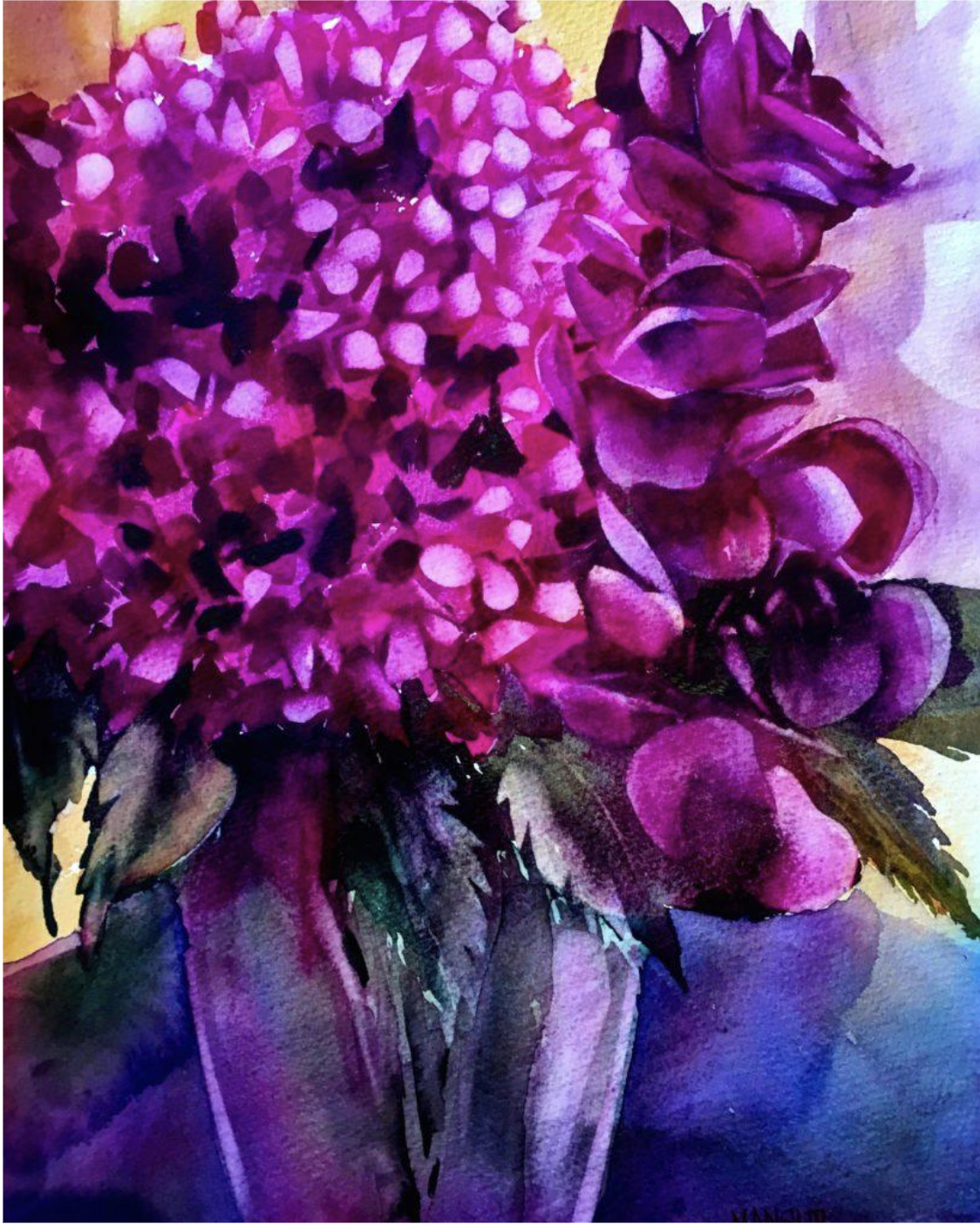
Georgia Mansur, Magenta Hydrangeas, watercolor, 23 x 17 in.
“So the consistency of the paint changes for each layer. The paint-and-water mixture is similar to weak tea in the first stage. The second stage uses less water and more paint, resulting in a creamy texture, and I’m working wet-in-wet. The third stage is wet-onto-dry.”
“I’ll use paint straight out of the tube to get an impasto effect. This allows me to put down marks that are really crisp. It’s the calligraphy stage with line work and mark-making, which makes it very personal. The last five minutes of the painting are those accents that make it you.”
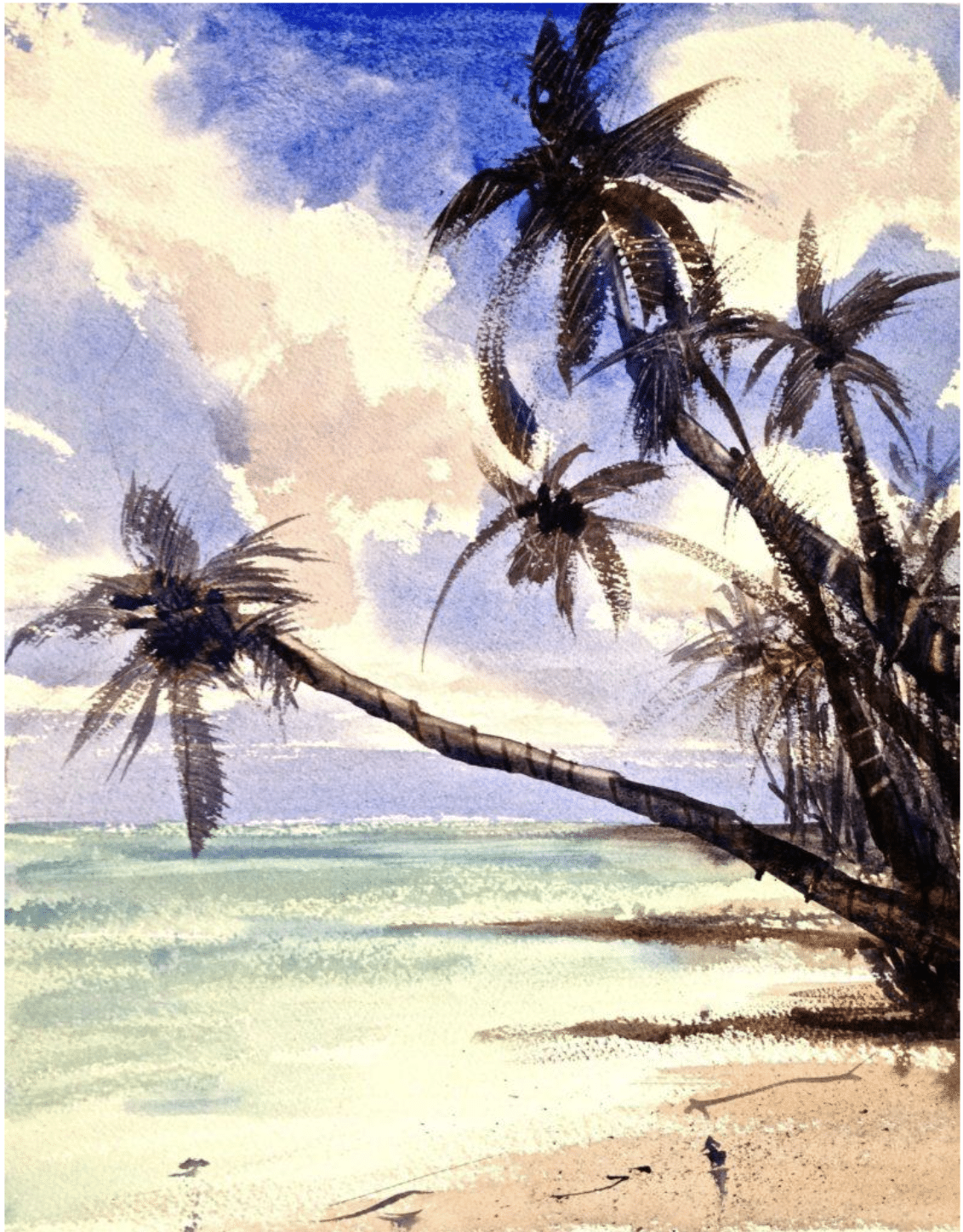
Georgia Mansur, Laid Back Style, watercolor, 16 x 12 in.
Discover Georgia Mansur’s “joyful palette” process to create rich and bold watercolor art every time!

